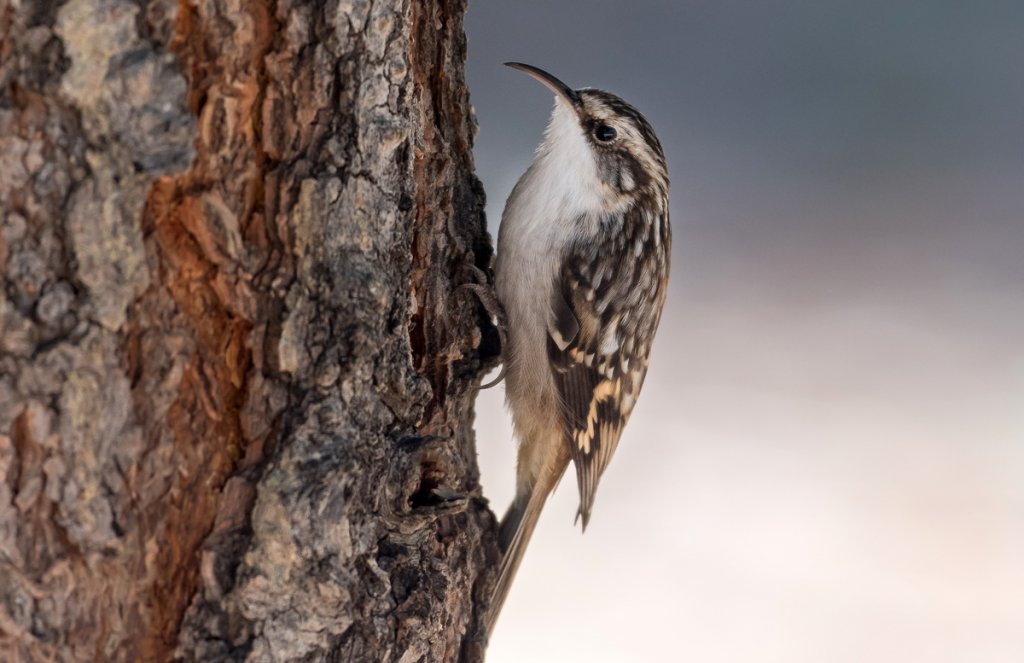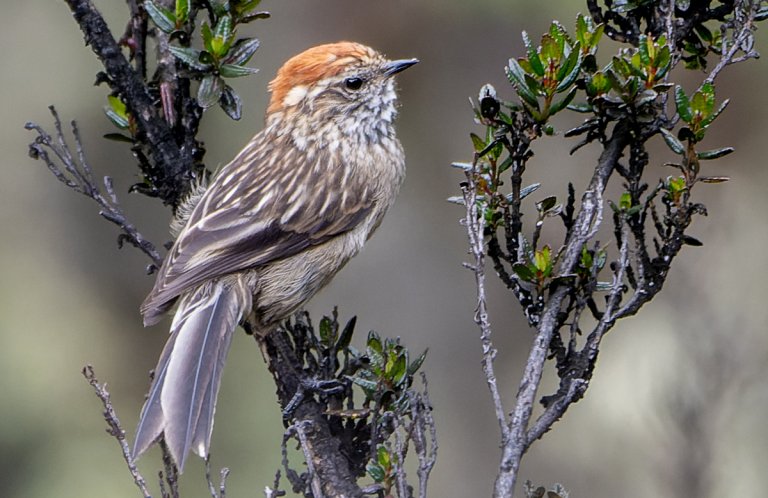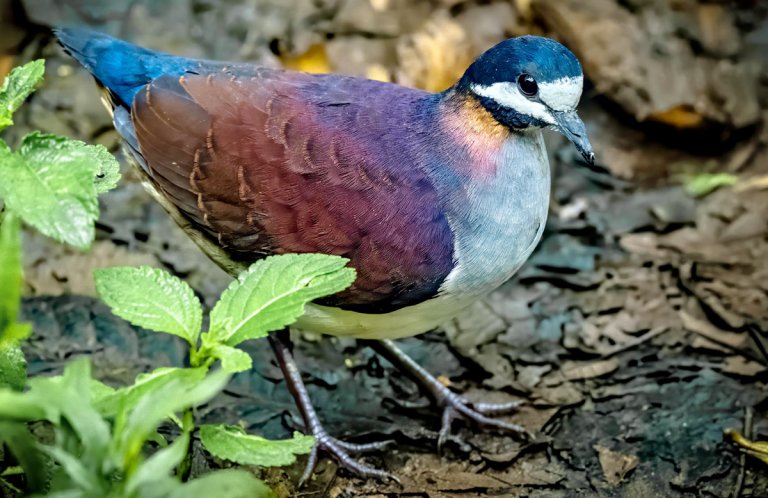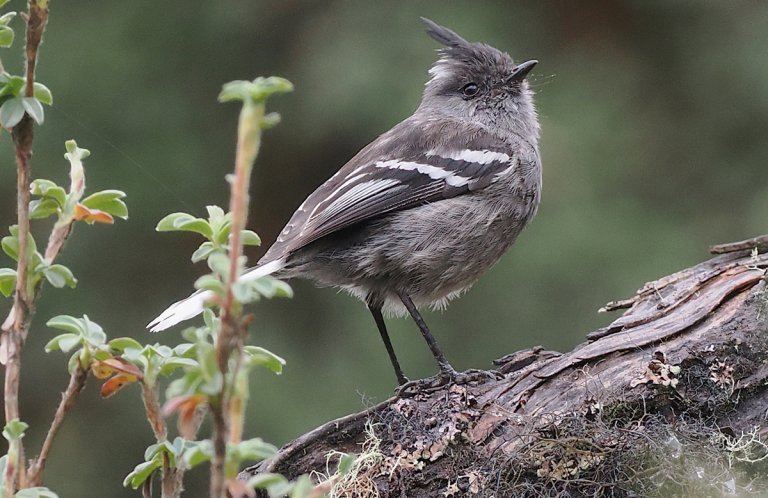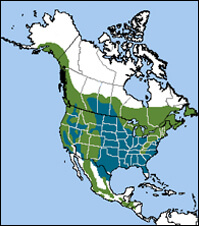 The tiny Brown Creeper is named for its distinctive feeding behavior. Starting at the bottom of a tree, it creeps up; when it reaches the top of the tree, it flutters down to the base of the next and begins circling up again. It never descends trees head-first like a nuthatch—this bird is always moving upward!
The tiny Brown Creeper is named for its distinctive feeding behavior. Starting at the bottom of a tree, it creeps up; when it reaches the top of the tree, it flutters down to the base of the next and begins circling up again. It never descends trees head-first like a nuthatch—this bird is always moving upward!
Like the endangered Northern Spotted Owl and Marbled Murrelet, the Brown Creeper favors mature forests with large trees. Habitat loss and fragmentation have caused the species to decline in many parts of its range. It is also a frequent victim of window collisions.
Ornithologist Arthur Cleveland Bent described this only native species of treecreeper perfectly: “The Brown Creeper, as he hitches along the bole of a tree, looks like a fragment of detached bark that is defying the law of gravitation by moving upward over the trunk, and as he flies off to another tree he resembles a little dry leaf blown about by the wind.”
Cryptic Camouflage
Both male and female Brown Creepers have streaky brown-and-white plumage, which provides amazingly effective camouflage. When threatened by a predator, these birds spread their wings and freeze in place against a tree trunk, becoming virtually invisible against the bark. They remain completely motionless until the threat passes.
Sign up for ABC's eNews to learn how you can help protect birds
Although the Brown Creeper is quite vocal, its quiet, high-pitched song and calls are easy to overlook. It is usually solitary but sometimes can be found associating with winter flocks of titmice, nuthatches, and kinglets.
Tiny Tree-hugger
The Brown Creeper moves slowly and methodically up a tree as it feeds, probing bark crevices with its thin, downward-curved beak for insects, spiders, eggs, and pupae. This species sometimes visits bird feeders in the winter for seeds and suet.
The birds have an interesting nesting strategy, building a hammock-like structure of twigs and bark strips behind a loose flap of bark on a dead or dying tree. There, the female lays three to seven eggs. The nests may have two openings, one for an entrance, and the other an exit. Hatchlings fledge after 15 to 17 days but continue to be fed by the parents for at least two weeks.
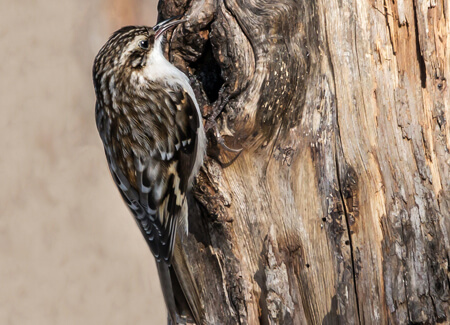
Brown Creepers have streaky brown-and-white plumage, which provides amazingly effective camouflage. Photo by FotoRequest, Shutterstock
Population Creeping Up?
Brown Creeper populations were stable or slightly increased between 1966 and 2014, according to the North American Breeding Bird Survey. However, in the western United States, timber harvesting—including both clearcutting and selective cutting—has removed many of the large, live trees that creepers use for foraging. Salvage-logging, like that approved for Klamath National Park in California, has removed dead and dying trees used for nesting.
Wildlife managers trying to gauge the effects of logging on wildlife habitat sometimes use the Brown Creeker as an indicator species. Its presence or absence can help suggest the health of the forest ecosystem.
Conserving the Brown Creeper
ABC's Bird-Smart Glass Program is part of our larger strategy for addressing the deadly problem of birds hitting windows. It offers ways that homeowners, building supervisors, and architects alike can make home windows and glass buildings safer for birds such as the Brown Creeper.
ABC also supports forest management strategies such as the Northwest Forest Plan, which aims to preserve the old-growth forests preferred by the Brown Creeper, as well as the Western Tanager and other bird species.
Donate to support ABC's conservation mission!





































